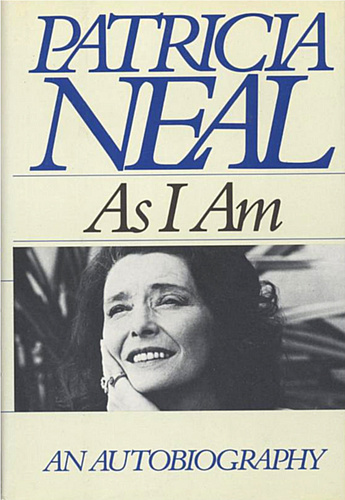 After reading most of the mainstream news media reporting on the life and times of screen legend Patricia Neal, I found myself fascinated with a very simple detail that was included in the tribute published by her hometown newspaper, The Knoxville News Sentinel. Here it is, with a sentence of introduction:
After reading most of the mainstream news media reporting on the life and times of screen legend Patricia Neal, I found myself fascinated with a very simple detail that was included in the tribute published by her hometown newspaper, The Knoxville News Sentinel. Here it is, with a sentence of introduction:
A celebration of her life and burial is planned for later in the week at the Abby of Regina Ludis, the Benedictine Cloistered Nunnery, in Connecticut, where the actress often spent time in a little house there both for solace and healing after converting to Catholicism.
It was there that she wrote her book, "As I Am."
That just stuck in my mind. She wrote the book, which has been described as very blunt and confessional in nature, while living in a cloistered monastery. Surely there was a story there, a story that provided more information about the final chapters of her life -- which news reports framed almost completely in terms of suffering, suffering, courage, triumph and then, ultimately, more suffering.
It was clear that many of the journalists who wrote the Neal obituaries were working with copies of "As I Am," or with materials drawn from them. What I wanted to know was quite simple: Was everyone ignoring the ending of the book and her life story? Was there a column in there somewhere?
As it turns out, it was hard to find the book (especially after a weekend dash to New Hampshire on family business that ended with a broken down van in the suburbs of New York City). However, my wife is a reference librarian and hunted one down online. With the help of the kind and deadline-friendly staff of the inter-library desk at American University, I was able to obtain scanned copies of the climactic passage of the book.
Now I really want to know why journalists avoided the events that, for Neal, pulled together the events of her life. Here is a large chunk of what I wrote this week for the Scripps Howard News Service, starting about a third of the way into the piece:
... Neal's story contained angels as well as demons. This is obvious in the overlooked passages in "As I Am" that described her conversion to Catholicism and her visits to the cloister of Regina Laudis (Queen of Praise) Abbey in Bethlehem, Conn., where the sisters helped her confess her sorrows and rage.
Finally, the abbess suggested that Neal move into the abbey for a month.
"Lady Abbess," said Neal, "I don't want to join up, you understand?"
The abbess sighed and said, "Believe me, we don't want you to, either. I don't think we could take it for more than a month."
As she arrived, Neal stubbed out the "last cigarette I would ever smoke."
A priest gave her a blessing and, she recalled, "I felt his cross blaze into my forehead. ... I traded my street clothes for the black dress of the postulant and scrubbed off my makeup. I removed the rings from my fingers and covered my hair with a black scarf. I looked at the bare wooden walls of my cell. ... I did not live the exact life of a postulant, but I did my best."
The memoir is stunningly blunt, including her account of a session with her spiritual director in which the actress screamed so many f-bombs at the sister that she finally started screaming them right back at her -- urging Neal to be more honest about her own sins, mistakes and self pity.
But here was the key for me: It is absolutely clear that this much-quoted memoir began as a journal that Neal wrote during the weeks she spent living in that cloister, a journal produced with the direct input of her spiritual director as part of -- literally -- the care of her soul. Yes, that meant dealing with decades of pain, including that decision to abort her love child with the married Gary Cooper. Yes, it meant struggling to forgive and to seek forgiveness from others (including Cooper's widow, in the final "scene" in the book).
The book ends with healing, not with another wave of pain. Here is how I ended the column:
... Neal decided that, "God was using my life far beyond any merit of my own making," allowing her to reach out to those who were suffering. "I learned that my damaged brain cannot reclaim what is dead. It has to create totally new pathways that allowed me to make choices I would never have made had I not suffered that stroke -- choices that an infallible voice assures me will be blessed."
One final lesson from the abbess, wrote Neal, stood out: "There is a way to love that remains after everything else is taken from us."
There is so much more that I could have included.
I know that Neal was an Academy Award winner and that the Greek tragedy that was her life was perfect for a painful news profile of a Hollywood survivor. But, you see, Neal honestly believed that her story did not end in tragedy. Is that part of the story? That is not how "As I Am" ends. Did anyone read all the way to the final act of this movie script?
